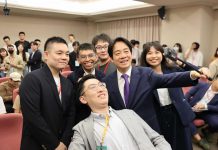Henry Tse, administrative director of Continental (HK) Travel Service Co Ltd., which caters to visitors from India and Southeast Asian countries such as Vietnam, Malaysia and Indonesia, says his company is struggling to stay afloat. “There’s no profit at all. Starting from 2012, the margin [of] profit I can tell you is zero,” Tse says.
To make matters worse, there were drops in visitor numbers from Tse’s target markets in Southeast Asia last year. In particular, the Hong Kong Tourism Board recorded negative growth in visitors from Malaysia and Indonesia, at about minus 30 per cent and minus 20 per cent respectively.
Given what he called a “terrible drop” in tourists from these markets, Tse says they hope to attract tourists from new markets, such as countries in the Indian Ocean. He thinks the lack of new tourist attractions is the main reason for the decline in visitors from Southeast Asian countries. For instance, he says Ocean Park has long been one of the very few major attractions in Hong Kong but, “we don’t have a new one to replace it.”
Raymond Huang Zhao-jie, who as one of the founders of Liuda Walking Tour Hong Kong is a newcomer to the inbound travel industry, disagrees. Huang’s company provides cultural guided walking tours targeting both Hong Kong locals and overseas visitors. Huang believes that offering interesting cultural experiences, such as Liuda’s Wan Chai Heritage and Haunted Tour, 1967 Riot Tour and Soho Gallery Tour, can be profitable.
Huang thinks Hong Kong is very diverse and many parts of it are yet to be discovered or packaged to attract foreign tourists who are often more curious to explore. Huang says that currently, “when people come to Hong Kong, they come to Hong Kong only for a few things, like go to Ocean Park, Lan Kwai Fong and TST.”
Yet he believes Hong Kong’s distinctive colonial history and cultural diversity are what make the city vibrant and appealing to more adventurous tourists and distinguishes it from cities in the Mainland.
While many regard cultural tours as a niche market in Hong Kong, Huang thinks otherwise. He argues that other big cities such as London and Paris have long-established and well-supported cultural tours, adding that most of the top 10 London tours on the popular travel review website TripAdvisor (http://www.tripadvisor.com/), are walking tours.
Since it was founded a year ago Liuda has only served a few hundred tourists and most of them were local. Huang says his company is still growing and he wants to expand the scope of services.
He has applied for the relevant licenses, including the inbound tour guide license. But he is annoyed by what he says is government inefficiency and red tape. “We have been applying for the license since September, that’s just very slow,” he says.
“You are not protecting the industry. I think you are destroying it,” Huang complains. He blames government inefficiency for a lack of new players and new products in the local tourism industry.
In a written reply, the Travel Agents Registry says in general, they can issue new licenses within four working days of application and upon receiving sufficient supporting documents but this “varies very much from case to case”.
Huang is not the only one who thinks Hong Kong’s tourism industry needs to offer greater variety. The Hong Kong Tourism Board (HKTB) launched the New Tour Product Development Scheme in 2012 to provide funding for marketing and promotion for local tour operators to come up with products incorporating new elements like art and culture, food and wine and heritage or living culture to attract overseas tourists.






































